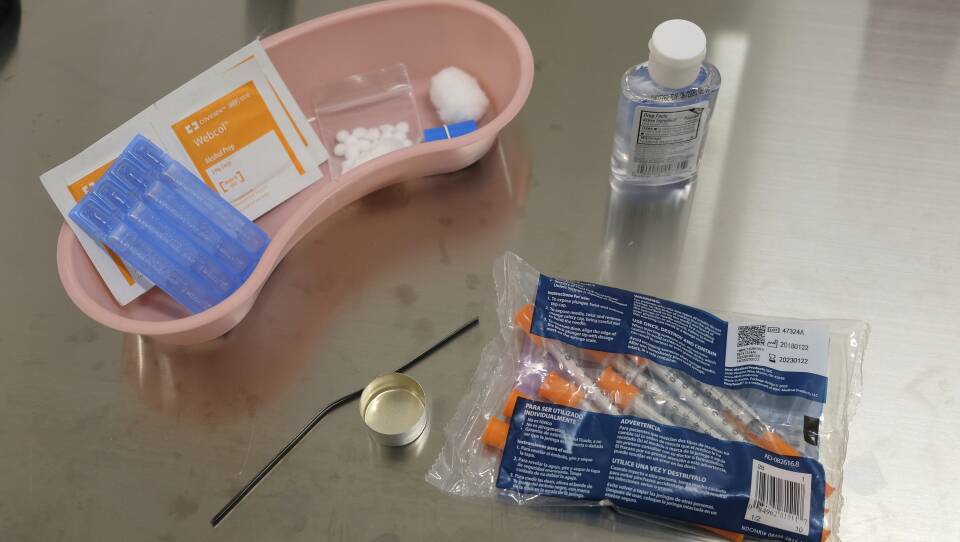After 2022 brought the highest number of opioid-related overdoses on record in Massachusetts, leaders and advocates around the state have renewed the call to expand harm reduction services including overdose prevention sites, or safe consumption sites, once prohibited by state law.
In April, a coalition of 16 mayors from around Greater Boston urged Gov. Maura Healey to explore — and fund — the use of overdose prevention centers, where people can use illegal drugs with impunity and under the supervision of staff trained to reverse overdoses. Such sites, which have existed for decades in Canada, Australia and Europe, are still illegal under federal law. In 2021, Rhode Island became the first state in the nation to authorize overdose prevention sites and New York opened the first publicly recognized sites later that year.
“Over the last few years, we’ve seen a tremendous shift,” said Carrie Richgels, the policy and advocacy manager at Fenway Health. “People are dying every year in Massachusetts because of overdoses and stigma, and everyone is sick of it.”
The opioid-related overdose death rate in 2022 was 33.5 per 100,000 people, with Black residents representing the largest increase, according to a report released last week from the Massachusetts Department of Public Health. That’s a 9% increase from the pre-pandemic high in 2016 and 57 more deaths than the previous high record set in 2021.
Research shows that existing methods of incarceration, forced rehab and involuntary treatment not only do not work, but can exacerbate the issue and ultimately lead to higher overdose death rates , Richgels said.
“Everyone in Massachusetts can see that this is a huge problem. Everybody knows someone who's affected by this,” Richgels said. “We can't keep doing the same thing and expecting to see improvements. We have to add another tool to the toolbox.”
A report commissioned by the city officials in Somerville and prepared by Fenway Health recommends the creation of a center for people to safely use drugs, open between 10 to 24 hours per day in a city-owned parking lot. The report incorporated community perspectives, and while the majority expressed support, not everyone was on board, Richgels said.
“It’s discouraging to hear negative feedback, but when people get enough information, they realize how needed these sites really are,” she said. “When people learn more about it, they see people who use drugs as people who are looking for health care and wanting to stay alive, just like all of us.”
Though a specific timeline has not yet been solidified, officials in Somerville are working to staff up a the dedicated site for safe drug use. Last week, the Somerville City Council approved an additional $170,000 in funding for the proposed overdose prevention center, in addition to $827,000 already appropriated in the city’s 2024 fiscal year budget.
“We’re the first in the state, we want to make sure we get this right,” said Grace Munns, a spokesperson for the City of Somerville. The initial pledge to create an overdose prevention site was announced by former Somerville Mayor Joseph Curtatone in 2019, despite opposition from federal prosecutors. Despite pandemic related delays, the plan is moving forward under Mayor Katjana Ballantyne’s administration, Munns said.
“It’s moving a little slower than we’d like, but it’s very much still a priority for the mayor to get this done,” Munns said.
Boston Mayor Michelle Wu is one of 16 mayors who signed off on the letter to Gov. Healey recommending the use of harm reduction and overdose prevention centers. City officials are “closely monitoring” Somerville’s progress and other proposed legislation to create overdose prevention pilot programs in municipalities across the state, according to a spokesperson from Wu's administration.
In 2018, the Massachusetts State Senate killed a bill to establish overdose prevention sites after then Governor Charlie Baker and then U.S. Attorney Andrew Lelling expressed strong opposition to the strategy. Plans to open sites for safe drug use would be “met with federal enforcement,” Leling said in 2019.
As new research has emerged and opioid deaths have continued to rise, state and federal officials have adopted a more lenient approach to proposed overdose prevention programs in recent years.
During her transition last year into office as governor of Massachusetts, Maura Healey told reporters she wouldn’t stand in the way of individual cities and towns opening overdose prevention centers and expressed support for “harm reduction, recovery and prevention of any kind.”
Last May, the U.S. government awarded $5 million in grant funding for a large-scale study at programs in New York and Rhode Island.
Though attitudes have gradually started to shift, overdose prevention sites are not a new concept.
Sarah Evans, the division director of drug policy at the international Open Society Foundations, spent eight years managing InSight in Vancouver, established in 2003 as the first overdose prevention site in North America. Twenty years later, data show that the strategy works, Evans says: within the first few years of opening, overdose mortality in the surrounding area decreased by 35% . Due to supervision by staff trained to reverse overdoses, the number of overdose deaths at the more than 90 overdose prevention sites around the globe remains zero .
“Those of us that have worked closely with these sites know that they work, that they save people's lives, that they get people indoors and that they allow us to create a zone of stability for people out of which other positive things can emerge that can't emerge when people are hiding in alleys or, you know, injecting in public in unsafe ways,” Evans said.
Though the site was controversial at its launch, public opinion has shifted to reflect a more accepting attitude, Evans says, based on polling data gathered by her organization.
“What we found is that the longer the site stayed open, the more people supported it, because the things that people hope from these sites generally come to pass, and the things that people fear generally don’t come to pass,” Evans said. “There isn't a correlation between the opening of these sites and the negative things that people anticipate, but the data on the ways in which it saves people's lives and makes things better is very clear.”
People who use drugs are not generally likely to travel more than one mile to access services, despite concerns that overdose prevention sites would attract an overwhelming number of people in need. Despite concerns these sites increase drug use, evidence points to the contrary: only one out of 1000 participants over the course of two years began injection drug use on InSight premises. Overdose prevention sites have not resulted in an increase in violence, drug-related crime or drug trafficking, and research shows a decline in theft and property crime following the establishment of overdose prevention sites.
“I understand why it may be a new concept to people and why folks are nervous,” Evans said, adding that the goal is to engage the public and encourage people to learn more about how these sites work and what they do.
“Some of the greatest advocates for these sites, in my experience, are not the people who initially felt positive about it out of the gate,” she said. “Some of the greatest advocates are actually people who thought this idea was really bad, and through conversation, sharing of evidence and debunking of myths, these folks came around to be really strong supporters.”








